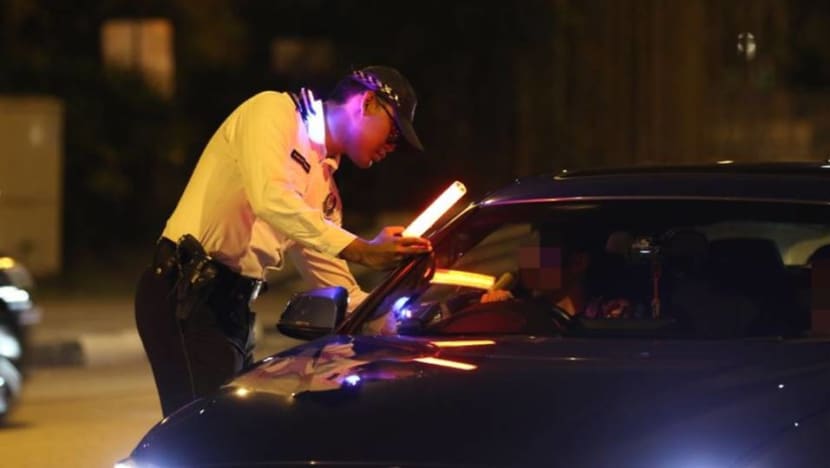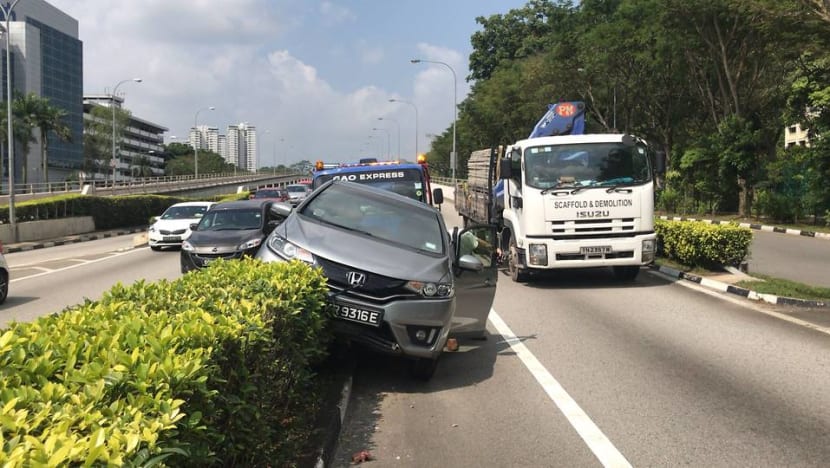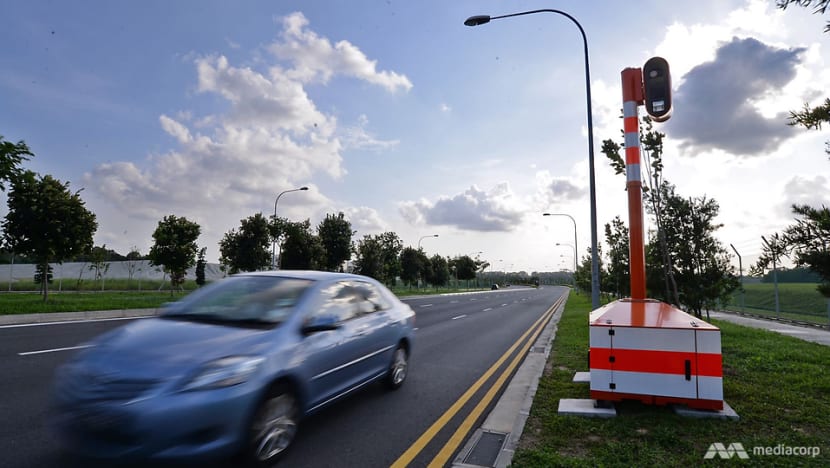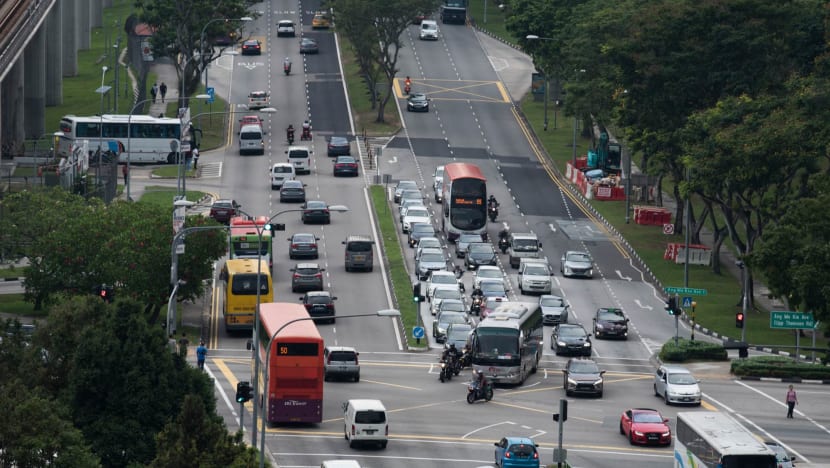commentary Commentary
Commentary: What happened to caution and graciousness on the roads?
Tougher punishments and more cameras cannot replace the need for better attitudes towards road safety.

Screengrab from a rage video that went viral, at ROADS.SG
SINGAPORE: One of the most fun-filled excursions from my primary school days was a class visit to the Road Safety Park.
Though it was intended to inculcate values of road safety, what most of us enjoyed about the experience was getting on the go-kart and zooming around at top speeds.
This memory came to mind as I read news of proposed changes to the Road Traffic Act (RTA) tabled to Parliament for a first reading on May 6, calling for minimum mandatory sentences for dangerous driving, with additional penalties for those who do so while under the influence of alcohol or drugs.
Under the new law, first-time offenders who cause death by dangerous driving could face up to eight years in jail, with a two-year minimum sentence, for example.

READ: It’s not your ‘grandfather’s road’, a commentary
These stiffer penalties will deter motorists who drive irresponsibly and cause serious accidents, said Senior Parliamentary Secretary for Home Affairs and National Development Sun Xueling who highlighted the changes in February.
“The basis for higher penalties is that motorists, being in control of a vehicle that they know can potentially cause great harm to other road users, ought to exercise greater care and responsibility,” MHA said in a statement that same month.
At the same time, it is also worth considering how we can do more to ensure that when people get behind the wheel, they display care and attention at all times, and do not develop habits which, at their worst, could result in criminal dangerous driving.
STRONGER ACTION AGAINST DANGEROUS DRIVING
Have our roads become more dangerous? Not really. Last year saw fewer road traffic accidents, repeating the of some years now.
Yet one in two drivers say they feel the roads are less safe than three years ago, according to a November 2018 survey by AXA Insurance.
Similar concerns are reflected in the rise in public reports of irresponsible driving received by the Traffic Police, which more than doubled from 6,900 in 2014 to 18,500 in 2018.

Against this backdrop, the expansion of the law to cover more road offences and issue harsher punishments has been a welcomed move, including the most recent amendment to the RTA passed in 2015 making it an offence to use a mobile phone or tablet while driving.
Higher fines have also been imposed on motorists, pedestrians and cyclists from April onwards, along with stronger enforcement action.
Technology has also augmented manpower to catch speedsters. Around the island, 240 red-light cameras have been upgraded to more advanced digital models, with seven more affixed along the Marina Coastal Expressway.
A new average speed camera system has also been installed along Tanah Merah Coast Road to deter speeding across a 4km stretch.
DO WE BEHAVE ON THE ROAD BECAUSE WE FEAR GETTING CAUGHT?
Criminologists say a higher likelihood of getting caught is a more effective deterrent than a small chance of a much heavier penalty.
“If I know there is a camera, I behave better,” said NTU Adjunct Associate Professor Professor Gopinath Menon on an episode on The Pulse podcast.

“But it’s not just a matter of catching. It’s also a reminder that the area is a dangerous one,” he says, pointing to the role of highly visible cameras deliberately brightly marked out in neon orange around the island that have shaped driver behaviour.
They are trying to prevent accidents.
Drivers used to continue speeding after they pass a camera, but the new average speed cameras can condition motorists to drive at slower speeds across long distances, said Chairman of the Singapore Road Safety Council Bernard Tay on the same episode.
LISTEN: The Pulse - Impatient drivers and other threats on the roads
Still, it is probably not feasible to blanket Singapore with average speed cameras, so how sustainable is it if we behave behind the wheel because we are afraid of getting caught?
No doubt stiffer penalties and better education should be part of the equation that keep our roads safe, but it would be inimical to Singapore’s desire to be a more gracious society if the risk of punishment becomes a bigger reason for driving more carefully.
Psychologists have also highlighted how small things, like congested traffic conditions on the road, can set the stage for road rage, which can easily spiral into aggressive and reckless driving.
Research has also shown that motorists tend to respond to perceived threats in a territorial fashion – additionally because cars give them the power and protection of anonymity.
ILLUSORY SUPERIORITY
An instinct to drive with less thought when motorists know they will not likely be caught might be a worldwide problem.

In Oxfordshire, UK, after police shut off speed cameras for eight months in 2011 due to budgetary cuts, the number of speeding motorists doubled when they were quietly switched back on.
Our sense of illusory superiority might have something to do with this, behavioural economists have pointed out. A famous US study from 1981 found that more than nine in 10 consider themselves to be above-average drivers – a number that hasn’t changed much even in recent years.
LOOMING THREATS
As Singapore becomes increasingly densely-populated and packed, a looming threat might be road rage.
“Everyone is rushing from one place to another. We are in a hurry. We have more vehicles on the road compared to the past, with private-hire cars being added in the thousands over the last few years,” Mr Tay said while on The Pulse.
People can get agitated when honked at and many fly into a rage, he added.
He urged people to give other drivers on the road the benefit of the doubt, when they take less thoughtful actions like cutting into other drivers’ lanes.
READ: Inside road rage - What turns Singaporean drivers into monsters?
Distracted driving, fueled by greater smartphone use, is another danger often ignored.
THE GOOD AND BAD NEWS
Still, the good news is that Singapore has one of the lowest road fatality rates globally of 2.2 per 100,000.
But the bad news is many of us take risky actions behind the wheel. Nearly seven in 10 admitted to engaging in behaviour on the road that run foul of the law – such as speeding or turning without signaling of texting - in that 2018 survey.
Ultimately, the safety of our roads depend on each of us taking extra care, being more considerate and practicing kindness on the roads. As the roads and pavements get more crowded, let’s not look to punitive measures or the watchful eye of more cameras to be better drivers and commuters.












